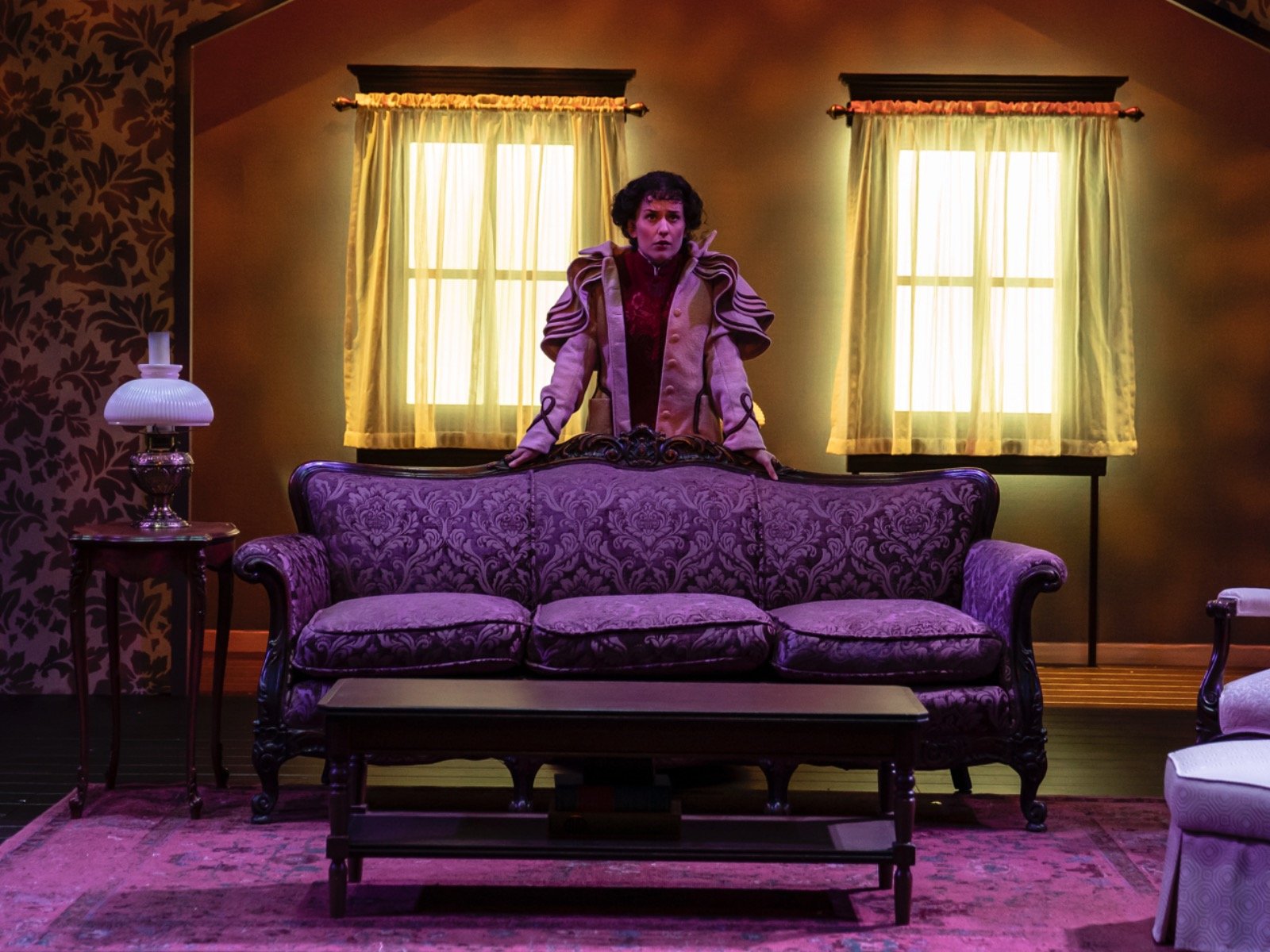Norwegian playwright Henrik Ibsen shocked European audiences at the end of the 19th century with his play, "A Doll’s House." In this classic domestic drama, Ibsen vividly portrays the limited legal, professional and personal options available to women at the time. He also introduced viewers to a completely new kind of heroine, one who – spoiler alert – declares her independence and defies societal expectations by leaving her husband and family to pursue her own goals.
American Players Theatre’s production of "A Doll’s House," running in the Touchstone Theatre in Spring Green through Oct. 6, is also shocking – in its relevance and its astonishing emotional depth. This thoughtful, multi-layered production directed by Keira Fromm will completely supplant any melodramatic interpretations of the required reading text you may have suffered through in a high school English class. Kept resolutely in the world of Norway in 1879 in its aesthetics, the play nonetheless feels vibrant and vital for modern audiences.
To accomplish this, the production depends on extraordinary performances, design and interpretation from the entire cast and creative team.
The design
Scenic designer Andrew Boyce has created a fashionable Victorian home designed to impress guests with its harmony and subtle elegance. An impeccable set of gold-rimmed china sits on a silver platter, ready to serve a proper tea. The dusty rose and mauve floral wallpaper stretches to cover the entire back wall of the stage, but dwarfs the outline of a miniature, claustrophobic "house," a recessed sitting area with two small windows and a lone lamp. The walls that seem as impenetrable as a fortress are later revealed to be translucent.
Similarly, costume designer Raquel Adorno has created exquisite clothing that easily communicates class and relative affluence as adeptly as time period and Norwegian culture. As Torvald, Nate Burger enters cutting a dashing figure in a luxe monogrammed, floor-length smoking jacket. Looking like a delicate, sweet dessert, Nora (Kelsey Brennan) begins the show in white bodice and whimsical, tiered pink skirt adorned with bows. Her garnet-colored, floor-length gown embroidered with traditional Scandinavian patterns is absolutely stunning, as is the more sensible and conservative dark blue bustle dress she dons to leave the house. More somber, less buoyant characters such as Mrs. Linde (Aila Peck) and Nils Krogstad (Juan Rivera Lebron) are clad in simpler earth tones.
The script
Ibsen wrote in his native Norwegian, so every version of "A Doll’s House" that you’ve read or seen in English is a translation. Depending on the skill of the translator, the era when it was undertaken and writer’s understanding of character and dramatic structure, the results can be very different. Some words don’t have direct parallels in other languages, and word choice is key to tone and intention. APT is using award-winning playwright Simon Stephens’ version, penned in 2012, which brings the play out of the quaint antiques section of the library and into the modern classics.
The urgency
One thing "A Doll’s House" has going for it is an immediate crisis. Like an action movie or thriller, the problem for main character Nora presents itself right away, and from that moment, the stakes just keep rising. This production makes sure that the audience feels the pressure intensify with every subsequent scene so that when Torvald accuses his wife of being addled to hysterics, the viewers don’t see a woman gone crazy; they see a desperate person trying to keep her entire world from unraveling.
The heightened realism
To reinforce Nora’s panic as she sees her marriage and her entire life threatened, sound designer Mikhail Fiksel magnifies the ticking of a clock. The more overwhelmed she feels, the louder the ticking becomes. Similarly, the pleasant melody of "The Tarantella" devolves into a terrified jumble of dissonant chords as Nora literally and figuratively spins out of control. Lighting designer Michael A. Peterson turns the stage a deep red as the walls of her home press in on her.
The love
Torvald and Nora seem like a hopelessly mismatched couple in the first scenes of the play. She is a silly, giggling young woman who enjoys shopping and indulging in sweets. He is a serious businessman who controls the purse-strings and virtually every other aspect of Nora’s life, calling her demeaning pet names and physically tensing when she fails to put a used teacup back on its tray.
But actors Brennan and Burger infuse their interactions with deep affection, complicating a dynamic that looks simple on the surface. As a result, Nora’s realization that she cannot ultimately remain in the marriage is more than a demand for autonomy; it is a conclusion that breaks both their hearts. As the troubled couple, Brennan and Burger give masterful performances that imbue some difficult 19th century language with 21st century emotional truth.
The sex
We may think of Victorian era dramas as stuffy and chaste, but this version of "A Doll’s House" erases that notion – it is brimming with sexual urges. Whether as an expression of love, a sign of dominance or as a means to his own satisfaction, this Torvald loves loving his wife. Even loosening her corset so she doesn’t hyperventilate, he can’t get a glimpse of Nora’s collar bone without acting on his arousal. This physical connection invigorates his otherwise aloof character and illustrates his passion for Nora, even if he doesn’t ultimately value her as an equal.
Similarly, Nora’s flirty talks with family friend Dr. Rank (a disarming Marcus Truschinski) also have a sexual tension that isn’t apparent on the page, raising the stakes for their relationship significantly.
The ensemble
Running shows in repertory with a core company of actors means that APT has a deep bench. This is evident particularly in plays with several smaller but important roles, such as "A Doll’s House." The roles of the maid Helene (Christina Panfilio) and the nanny Anna (Carolyn Ann Hoerdemann) have few lines, but they are fully realized through body language, wide-eyed looks or sighs. The secondary character Nils Krogstad (Juan Rivera Lebron), who threatens to blackmail Nora, is played with similar finesse – as wounded and earnest, not as a mustache twirling villain. The youngest of the Helmer family’s three children is even played by 7-month-old Emma Dieckman. And yes, she really nailed it.
While many audience members may have considered seeing Ibsen’s "A Doll’s House" purely as a preview for Lucas Hnath’s "A Doll’s House, Part 2," opening in the Touchstone on Oct. 26, this production is far from required backstory. It is a moving story, beautifully told by director Fromm and the entire company.







